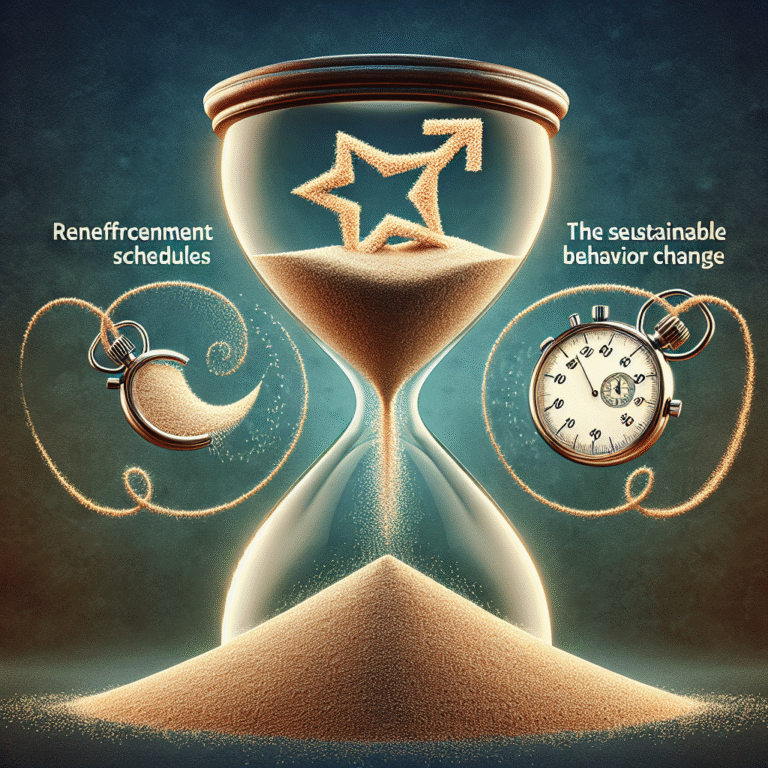
Introduction
Imagine mastering a new language or skill effortlessly, as if your mind is absorbing knowledge without any conscious effort on your part. This phenomenon is not just the stuff of dreams; it is rooted in the fascinating realm of implicit learning. In this article, we will explore the intricacies of implicit learning, a process that operates beyond conscious awareness, shaping our behaviors and understanding in profound ways. The journey promises to reveal not only the science behind it but also practical implications that can enhance various aspects of life, from education to personal development.
What is Implicit Learning?
Implicit learning is the acquisition of knowledge independent of conscious awareness. Unlike explicit learning, which involves deliberate practice and attention, implicit learning can occur incidentally, often without the learner being aware of it. This form of learning allows us to internalize patterns, rules, and information seamlessly.
The Mechanisms Behind Implicit Learning
At its core, implicit learning engages different cognitive processes compared to explicit learning. It utilizes procedural memory— the type of memory responsible for knowing how to do things, such as riding a bike or playing an instrument.
Case Study: Language Acquisition in Children
Research shows that children learn languages through implicit methods rather than explicit instruction. For example, a child exposed to a new language may start using correct grammatical structures naturally, without having been formally taught those rules. This innate capacity for language acquisition highlights how implicit learning operates in early development stages.
Characteristics of Implicit Learning
- Automaticity: Once a task is learned implicitly, it can be performed automatically, freeing up cognitive resources for other activities.
- Resistance to Awareness: Individuals often cannot articulate the rules or patterns they learned implicitly.
- Context Sensitivity: Implicit learning is highly dependent on the environment in which learning occurs.
| Characteristic | Explanation |
|---|---|
| Automaticity | Ability to perform learned tasks with little effort |
| Resistance to Awareness | Unawareness of specific rules or patterns learned |
| Context Sensitivity | Dependence on environmental context for learning |
Neuroscience of Implicit Learning
The brain’s neural circuits involved in implicit learning significantly differ from those activated during explicit learning. Researchers have identified that the basal ganglia—an area of the brain associated with habit formation—plays a critical role in implicit learning processes. Neuroimaging studies reveal that while explicit tasks activate the prefrontal cortex, implicit tasks predominantly engage the basal ganglia.
Evidence from Neuroimaging Studies
A fascinating neuroimaging study published in Neuropsychologia demonstrated the divergence in brain activation between implicit and explicit learning tasks. Participants completed a sequence learning task, with some explicitly instructed on the sequence. The implicit group exhibited increased activation in the basal ganglia, suggesting a stronger neural basis for their automatic learning.
Applications of Implicit Learning
Understanding implicit learning’s principles opens the door to countless applications across various fields—education, parenting, coaching, and therapy.
1. Education
In educational settings, incorporating implicit learning strategies can enhance student engagement and retention.
Case Study: Implicit Learning in Math Education
A study involving middle school students utilized games that required pattern recognition without explicit instruction on mathematical formulas. The results showed significant improvement in problem-solving skills, indicating the effectiveness of implicit learning approaches.
2. Parenting
Parents can foster implicit learning environments by exposing children to diverse experiences and opportunities for exploration.
Example: Creating a Rich Learning Environment
By providing children with varied experiences—such as musical instruments, sports, and interactive learning tools—parents unconsciously facilitate implicit learning. Children absorb a myriad of cognitive and social skills through active participation.
3. Sports Coaching
Athletes often rely on implicit learning to refine their skills through practice and repetition.
Case Study: Implicit Learning in Gymnastics
A study with competitive gymnasts illustrated that those training under implicit learning conditions exhibited better performance during competitions than those receiving explicit feedback. The gymnasts learned techniques inherently, allowing for a more fluid execution during high-pressure situations.
4. Therapeutic Practices
Therapists can tap into implicit learning modalities to help clients adopt new behaviors or modify patterns.
Example: Habituation in Cognitive Behavioral Therapy (CBT)
In CBT, clients often learn coping strategies and adaptive responses implicitly through repetitive exposure and practice, leading to long-term behavioral change that becomes second nature.
Overcoming Challenges in Implicit Learning
Despite the advantages of implicit learning, certain challenges may arise. For instance, implicit learning may not work effectively in environments that emphasize explicit instruction or where anxiety inhibits performance.
Strategies for Promoting Implicit Learning
- Encourage exploration: Foster an environment where trial and error is embraced.
- Reduce pressure: Minimize anxiety associated with performance to allow natural learning processes to occur.
- Integrate diverse modalities: Use a mix of auditory, visual, and kinesthetic learning tools to cater to different preferences.
Conclusion
As we have explored, implicit learning transcends conscious awareness, enabling us to absorb knowledge in enriching and often unnoticed ways. By understanding the principles of implicit learning, we can make informed choices in education, parenting, coaching, and therapy. This transformative potential not only enhances our personal development but also contributes to collective growth in society.
Whether you’re an educator aiming to engage students or a coach looking to improve athlete performance, you can harness the power of implicit learning to unlock new levels of achievement. Remember, sometimes the best learning happens when we least expect it.
FAQs
1. What is the difference between implicit and explicit learning?
Implicit learning occurs without conscious awareness of the knowledge being acquired, while explicit learning involves deliberate effort and attention.
2. How can implicit learning be utilized in everyday life?
You can harness implicit learning by exposing yourself to new experiences, practicing skills without focused study, and integrating learning into enjoyable activities.
3. Can implicit learning be hindered?
Yes, factors like anxiety and overly structured learning environments can inhibit the natural process of implicit learning.
4. Is implicit learning effective for all types of knowledge?
While effective for acquiring skills and patterns, explicit instruction still plays a crucial role in complex topics that require detailed understanding.
5. How does age affect implicit learning?
Age can influence implicit learning, with younger individuals often demonstrating a stronger capacity for it, particularly in language acquisition.
By understanding and applying the insights from "Beyond Conscious Awareness: The Science of Implicit Learning Explained," you embark on a journey toward maximizing your potential through the effortless absorption of knowledge and skills.














